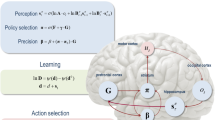Abstract
The paper presents a parallel parsing system for Definite Clause Grammars suitable for committed-choice parallel logic programming languages. Grammatical elements such as words and nonterminal symbols are defined as parallel processes. Parsing is done by the processcommunication. The advantage of the system is that all the grammar rules are compiled into the parallel logic programming language and the program has neither any side-effect nor duplicated computation.
Similar content being viewed by others
References
Aho, A. V. and J. D. Ullman,The Theory of Parsing, Translation, and Compiling, Vol. 1: Parsing, Prentice-Hall, 1972.
Clark, K. L. and S. Gregory, “A Relational Language for Parallel Programming,”Research Report DOC 81/16, Imperial College, July 1981.
Clark, K. L. and S. Gregory, “PARLOG: Parallel Programming in Logic,”Research Report DOC 84/4, Imperial College, April 1984.
Gazdar, G., E. Klein, G. K. Pullum and I. A. Sag,Generalized Phrase Structure Grammar, Basil Blackwell Publisher Ltd, 1985.
Gregory, S., “How to Use Parlog (C-Prolog Version),”Research Report, Department of Computing, Imperial College, Oct. 1984.
Kaplan, R. M. and J. Breasnan, “Lexical-Functional Grammar: A Formal System for Grammatical Representation,” inThe Mental Representation of Grammatical Relations (J. Breasnan ed.), MIT Press, pp. 173–281, 1982.
Kay, M., “Algorithm Schemata and Data Structures in Syntactic Processing,”CSL-80-12, XEROX Palo Alto Research Center, Oct., 1980.
Marcus, M. P.,A Theory of Syntactic Recognition for Natural Language, The MIT Press, 1980.
Matsumoto, Y. et al., “BUP: A Bottom-Up Parser Embedded in Prolog,”New Generation Computing, Vol. 1, No. 2, pp. 145–158, 1983.
Matsumoto, Y., M. Kiyono and H. Tanaka, “Facilities of the BUP Parsing System,”Proceedings of Natural Language Understanding and Logic Programming, Rennes, 1984.
Pereira, F. C. N. and D. H. D. Warren, “Definite Clause Grammars for Language Analysis—A Survey of the Formalism and a Comparison with Augmented Transition Networks,”Artificial Intelligence, 13, pp. 231–278, 1980.
Pratt, V. R., “LINGOL—A Progress Report,”Proc. the 4th IJCAI, pp. 422–428, 1975.
Pullum, G. K. and G. Gazdar, “Natural Languages and Context-free Languages,”Linguistic and Philosophy, 4, pp. 471–504, 1982.
Shapiro, E. Y., “A Subset of Concurrent Prolog and Its Interpreter,”ICOT Technical Report, TR-003, Feb., 1983.
Ueda, K., “Guarded Horn Clauses,”Proc. The Logic Programming Conference, ICOT, 1985.
Author information
Authors and Affiliations
About this article
Cite this article
Matsumoto, Y. A parallel parsing system for natural language analysis. New Gener Comput 5, 63–78 (1987). https://doi.org/10.1007/BF03037458
Received:
Revised:
Issue Date:
DOI: https://doi.org/10.1007/BF03037458




